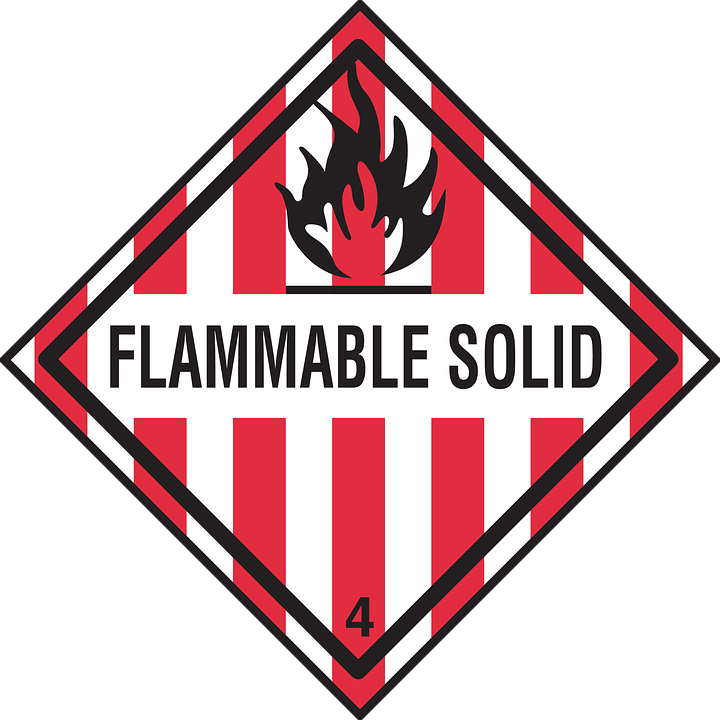A large variety of solid materials used in industries and at other places present fire risk. Flammable solid materials become particularly hazardous under certain conditions. Some possess the ability of being easily ignited by external sources such as sparks and flame. Some other are liable to heat spontaneously and ignite.
Certain materials have the property of releasing flammable gases when in contact with water. in the handling and storage of various flammable solids apart from taking normal precautions, additional precautions will have to be taken to guard against the hazard posed due to condition or circumstances under which flammable materials may became severe fire risk. Handling of Flammable Solids
Bales of Cotton and jute hemp represent some of the solid materials which are easily ignited. With an ignition source, the fire initially flashes over fibres on the surface and then travels at a slower rate between bales and into individual bales. Ignition source may be electricity, mechanical sparks, smoking, matches etc. Bales should be protected from such source. Electrical wiring in a warehouse for the bales should be installed in a rigid metal conduit for protection against mechanical damage. Spark producing electrical equipment including switches, fuses, circuit breakers should be in dust tight enclosures. Ware-house to be of non combustible construction with floors sloping to prevent accumulation of water. Piles sizes to be not too large and about 3m wide aisles Space to be maintained between piles. With bales of jute, at least 1m wide space should be left along the walls and with bales of other fibres, at least 0.8m wide gap is to be left. The height of the pile should be limited taking into account the floor loading capacity and the weight of bales when soaked with water. In any case at least 1m head clearance is to be maintained between the top of the piles and the deflectors or sprinklers.
Bituminous coal represents flammable solids liable to spontaneous combustion. It absorbs oxygen from the air and the absorption is more rapid when the coal if freshly mined or contains much fine dust. Moisture adds oxidation.
Coal should not be stored in contact with sources of external heat or over trenches, manhole covers and similar surfaces which may allow movement of air through piles. In yards piles height to be limited to 3m with low grade coal and 5m with best grade coal. Where bins are used for storage, these should be of non-combustible material with the structure roofed over to protect the coal from rain. The space above the coal should have adequate ventilation to prevent concentration of gases given off by the coal.
Calcium carbide and alkali metals are some of the solids which when in contact with water liberate flammable gases. In some cases the gases released may be ignited from the heat of reaction. These materials are to be packed in air tight containers and stored in dry cool and well ventilated building of non-combustible or fire resistant construction. They should be separated from combustibles, oxidising, agents and mineral acids.






